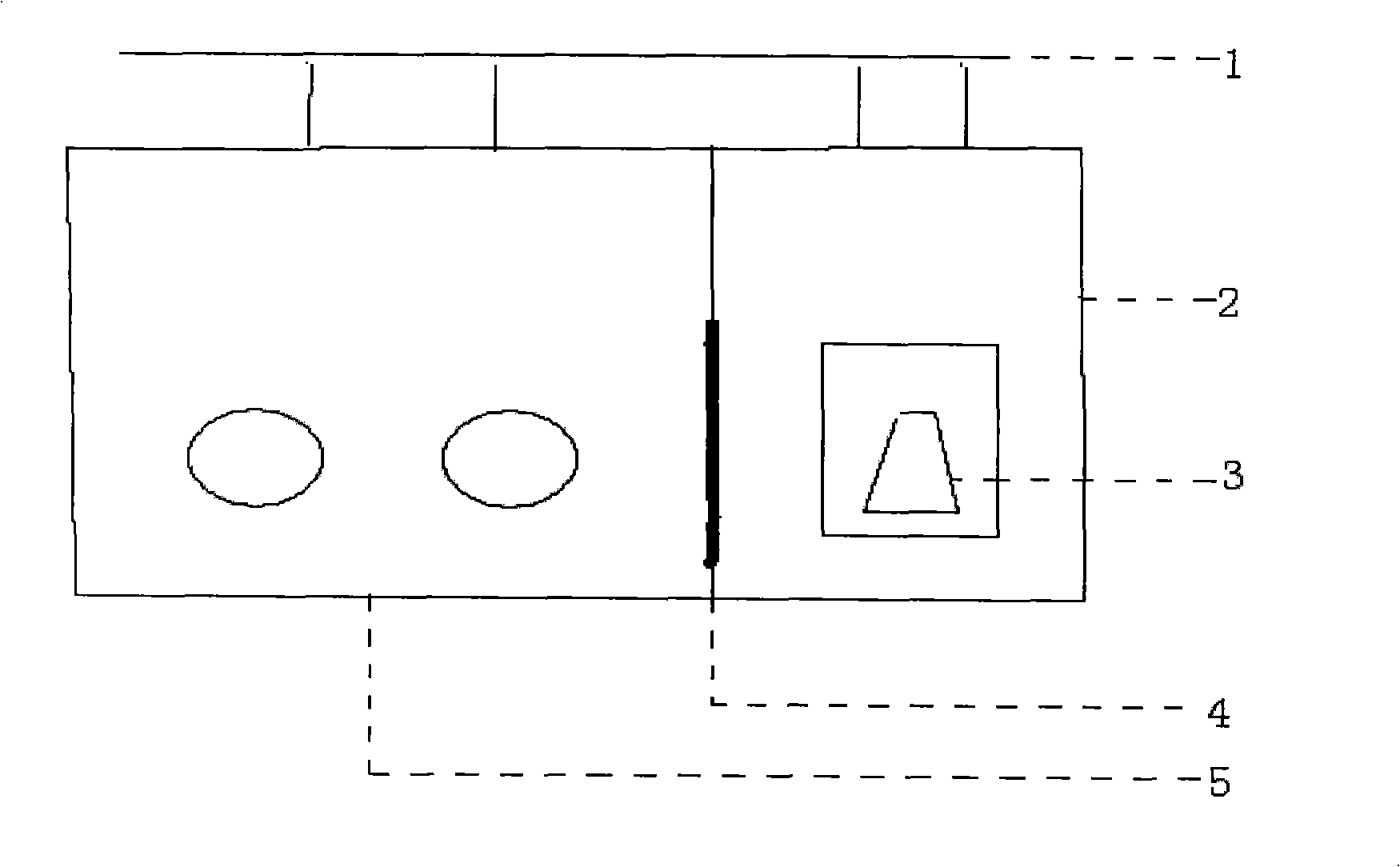Isolated culture method for anaerobic microorganism
An anaerobic microorganism, separation and cultivation technology, applied in the direction of microorganisms, microorganisms, biochemical equipment and methods, etc., can solve the problems of bacterial death, exposure, and easy mutual contamination of petri dishes, and achieve fast separation speed and low operating cost Effect
- Summary
- Abstract
- Description
- Claims
- Application Information
AI Technical Summary
Problems solved by technology
Method used
Image
Examples
Embodiment 1
[0034] 1. Enrich 2.5 g of the bottom mud of the Pacific Ocean deep-sea hydrothermal vent containing the target bacteria with the liquid medium added with ferrous sulfate heptahydrate (0.0001g / L) indicator.
[0035] 2. Under aerobic conditions, use ethanol (concentration: 0.2mL / L) as carbon source, ferrous sulfate heptahydrate (0.006g / L) as indicator, agar concentration as 1.8g / L, prepare medium 50mL, Place in a Erlenmeyer flask with a cotton stopper, and sterilize under high temperature and high pressure (121° C., 15 minutes).
[0036] 3. Before the culture medium is solidified, place the Erlenmeyer flask and the enrichment solution in the sample chamber of the anaerobic workstation, pump nitrogen and fill it with nitrogen repeatedly three times, and remove the air in the culture medium.
[0037] 4. In the operation box of the anaerobic workstation, add 3mL of the enriched supernatant to the uncoagulated medium, shake well and distribute it into anaerobic tubes (or transparent...
Embodiment 2
[0043] 1. Enrich 3 g of the Atlantic deep-sea hydrothermal vent bottom mud containing the target thalline with the liquid medium added with ferrous sulfate heptahydrate (0.0005g / L) indicator.
[0044] 2. Under aerobic conditions, use ethanol (concentration of 10mL / L) as carbon source, ferrous sulfate heptahydrate (0.0005g / L) as indicator, and agar concentration at 0.03g / L, prepare medium 15mL, set In a Erlenmeyer flask with a cotton stopper, high temperature and high pressure sterilization (121° C., 15 minutes).
[0045] 3. Before the culture medium is solidified, place the Erlenmeyer flask and the enrichment solution in the sample chamber of the anaerobic workstation, pump nitrogen and fill it with nitrogen repeatedly three times, and remove the air in the culture medium.
[0046]4. In the operation box of the anaerobic workstation, add 3mL of the enriched supernatant to the uncoagulated medium, shake well and distribute into anaerobic tubes.
[0047] 5. Take out the anaerob...
Embodiment 3
[0052] 1. Enrich 3-10mL of the surface water near the bottom of the Pacific Ocean containing the target bacteria with a liquid medium added with ferrous sulfate heptahydrate (0.02g / L) indicator.
[0053] 2. Under aerobic conditions, sodium acetate (concentration is 8g / L) is used as carbon source, ferrous sulfate heptahydrate (0.02g / L) is used as indicator, and agar concentration is 0.03g / L, prepare medium 100mL, Place in a Erlenmeyer flask with a cotton stopper, and sterilize under high temperature and high pressure (121° C., 15 minutes).
[0054] 3. Before the culture medium is solidified, place the Erlenmeyer flask and the enrichment solution in the sample chamber of the anaerobic workstation, pump nitrogen and fill it with nitrogen repeatedly three times, and remove the air in the culture medium.
[0055] 4. In the operation box of the anaerobic workstation, add 3mL of the enriched supernatant to the uncoagulated medium, shake well and distribute into anaerobic tubes.
[0...
PUM
 Login to View More
Login to View More Abstract
Description
Claims
Application Information
 Login to View More
Login to View More - R&D
- Intellectual Property
- Life Sciences
- Materials
- Tech Scout
- Unparalleled Data Quality
- Higher Quality Content
- 60% Fewer Hallucinations
Browse by: Latest US Patents, China's latest patents, Technical Efficacy Thesaurus, Application Domain, Technology Topic, Popular Technical Reports.
© 2025 PatSnap. All rights reserved.Legal|Privacy policy|Modern Slavery Act Transparency Statement|Sitemap|About US| Contact US: help@patsnap.com


